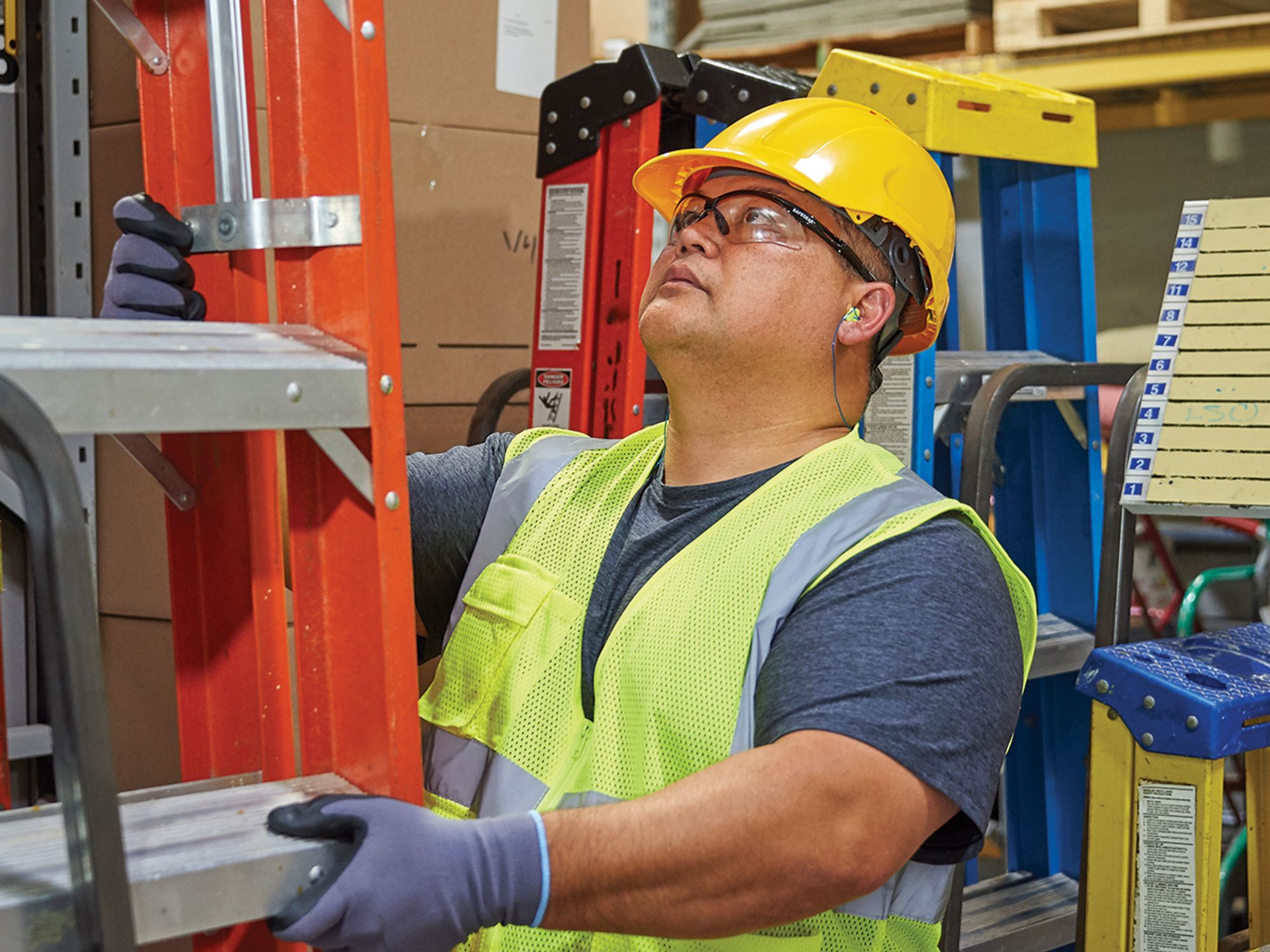InstituteSafety & HealthGeneral Industry SafetyWalking Working SurfacesWalking Working SurfacesUSALaddersEnglishAnalysisFocus AreaIn Depth (Level 3)
Portable ladders
['Walking Working Surfaces']

- OSHA has additional requirements for portable ladders that cover load capacity, slipping on rungs/steps, moving while occupied, and more.
The portable ladder requirements are in addition to the requirements for all ladders. The Occupational Safety and Health Administration (OSHA) also uses performance-based requirements for portable ladders.
OSHA has several requirements for portable ladders, including:
- Rungs and steps must be treated to minimize the possibility of slipping while climbing up and down the ladder. OSHA suggests the use of skid-resistant coatings, dimpling or corrugating metal rungs and steps, etc.
- Stepladders and combination ladders must be equipped with metal spreader or locking devices.
- Ladders must not be loaded beyond their maximum intended load capacity. This includes the weight of the employee and any tools or equipment carried.
- Portable ladders must be used on stable surfaces; if the surface is slippery, the stepladder must be secured.
- Single rail ladders are not allowed.
- A portable ladder cannot be moved or shifted when an employee is on the ladder.
- A portable ladder placed in a passageway, doorway, etc., must be secured to prevent displacement, and be guarded by a temporary barricade.
- The cap or the top step of the stepladder may not be used as a step.
- The top of a non-self-supporting ladder must be supported by both rails, unless the ladder is equipped with a single support attachment.
- A portable ladder must extend at least 3 feet above an upper landing surface.
- Portable ladders and ladder sections must not be tied together, unless they are designed for such use.
- Portable ladders must not be placed on boxes, barrels, etc., to gain additional height.
